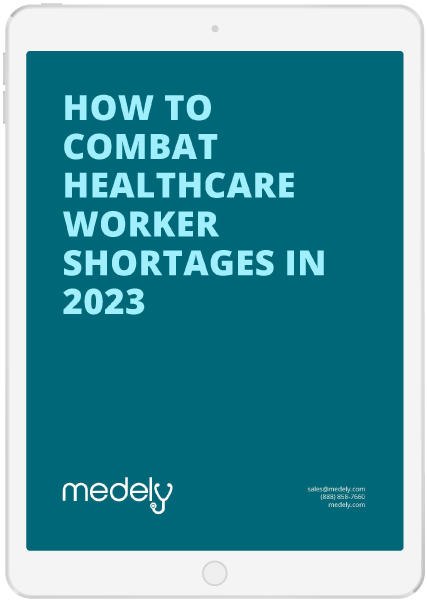Here’s the truth that no one wants to uncover at post-acute care facilities: nurse burnout. And, this truth is universal at all post-acute care facilities, whether the facility is aware of the problem or not. The good news is that we’re here to prepare you for the reality that every facility’s staff is experiencing burnout and provide the strategies to help you prevent post-acute nurse burnout.
Here are 3 steps for how leaders who are trying to navigate this unwanted truth can improve team morale, appreciation, and overall, patient care and outcomes, whether they’re running a long-term care hospital, rehabilitation facility, home health, or skilled nursing facility:
1. Review staff vacation hours
Reviewing the vacation hours your staff is or is not taking will help leaders get a glimpse into who on staff is actually using their vacation days or taking time off. Leaders should log in to their systems and review those hours to see if their staff members have been able to take vacation in the past 6 months. Take a look at staff members who are picking up shifts and see what that looks like compared to the time off they have taken. Does that match up?
This is important to understand what the state of mental health, burnout, and exhaustion might be like for team members at your post-acute care facility so you can work on more strategies to prevent post-acute nurse burnout.
2. Send out an internal survey
It’s a good strategy to create and send an internal survey to your staff members in regards to how they’re feeling in their everyday job, addressing burnout and if they are experiencing it or if they are even aware of it.
This is an opportunity to talk to the different generations of team members you have on staff. Depending on the audience, there will be staff that will be vocal, that might be Gen Z-ers and staff that are not so vocal. Not everyone might be totally comfortable talking to their manager about needing a break, so a survey can be a good start for everyone.
Leaders can use a free tool like Survey Monkey or Google Forms, and send out 3 quick questions – asking staff how are they feeling, how do they think performance-wise they are doing so far, and, in the past 6 months have they been able to take a day off. These open-ended questions can start uncovering information that’s hard to report on unless every single person is asked. This way, all team members can weigh in, and weigh in anonymously if they so choose. Additionally, the workload at healthcare facilities doesn’t often leave time for personal chats with all staff members. Since leaders and staff are so focused on patient care, it can be hard to address these issues, but a survey like this can show you care about your team and their wellbeing.
3. Identify what your facility can do to prevent post-acute nurse burnout
Next up to prevent post-acute nurse burnout is to take action on those survey results. Not every facility can provide unlimited vacation time for their staff, but as a facility, you can utilize Medely to assist in these situations.
Even losing just one member of the team for 1-2 days can leave a gap in coverage for your facility, but Medely per diem and travel assignment nurses and allied health professionals can help you fill that gap. You can sign up and schedule a job or assignment ahead of time instead of relying on overtime, which can exhaust and burn out your team further. Medely has you covered while your internal staff is able to take some time off.
Addressing burnout is extremely important to keep taking care of your full-time staff and reduce churn. Using Medely’s easy-to-use platform and network of over 300K nurses and health professionals, you can start building a local talent pool (and add the best ones to your Favorites list to keep them coming back!) so your team can take time off without overburdening your current staff or leaving a gap in coverage for your patients.
Check out Medely to sign up as a facility. Our platform empowers healthcare leaders with streamlined scheduling, time tracking, and credentialing to help you achieve control and visibility over your entire extended workforce.
Apply to be a part of our network if you’re a nurse or health professional. We’re ready to help you create your own schedule and earn on your terms.

How to effectively combat healthcare labor shortages in 2024
Learn how to effectively combat healthcare labor shortages with an extended workforce to maintain continuity of care and gain access to tools you can use to manage your extended workforce more effectively and efficiently. In this eBook, you’ll learn:
- ■ Why nurses are leaving full-time jobs behind.
- ■ The factors impacting healthcare professional employment.
- ■ How you can use an extended workforce to meet demand.
- ■ How you can use data-led staffing planning to manage costs.



